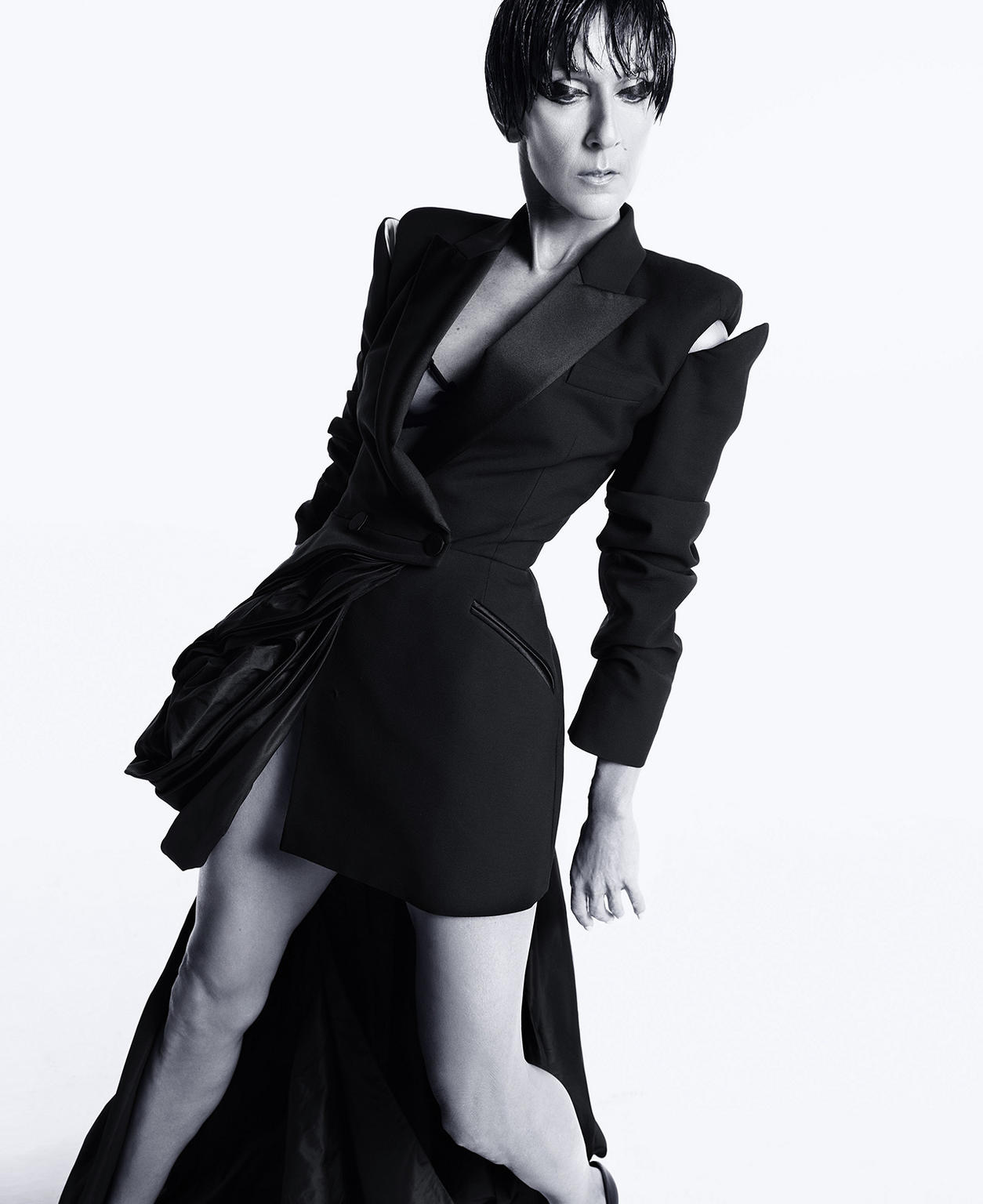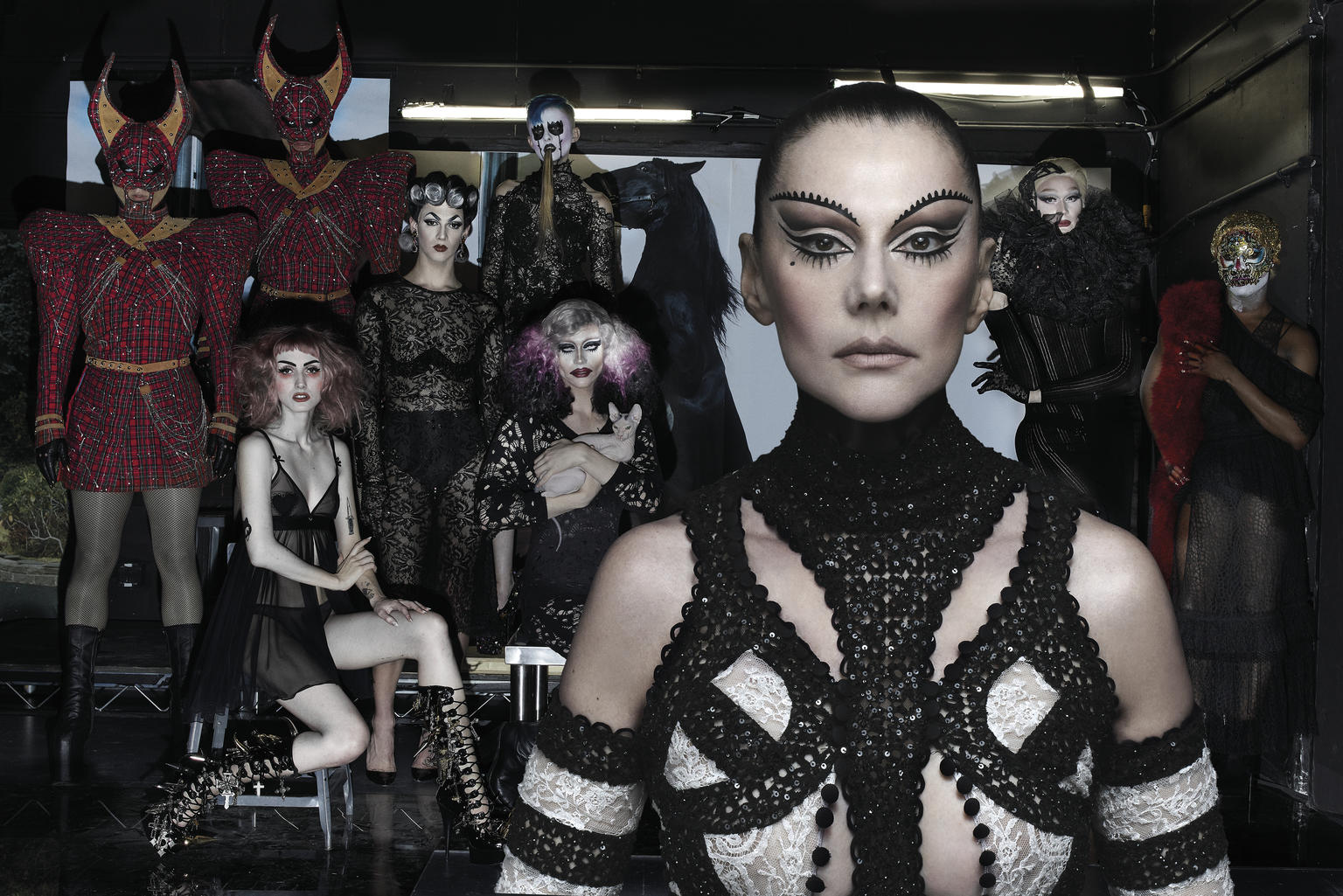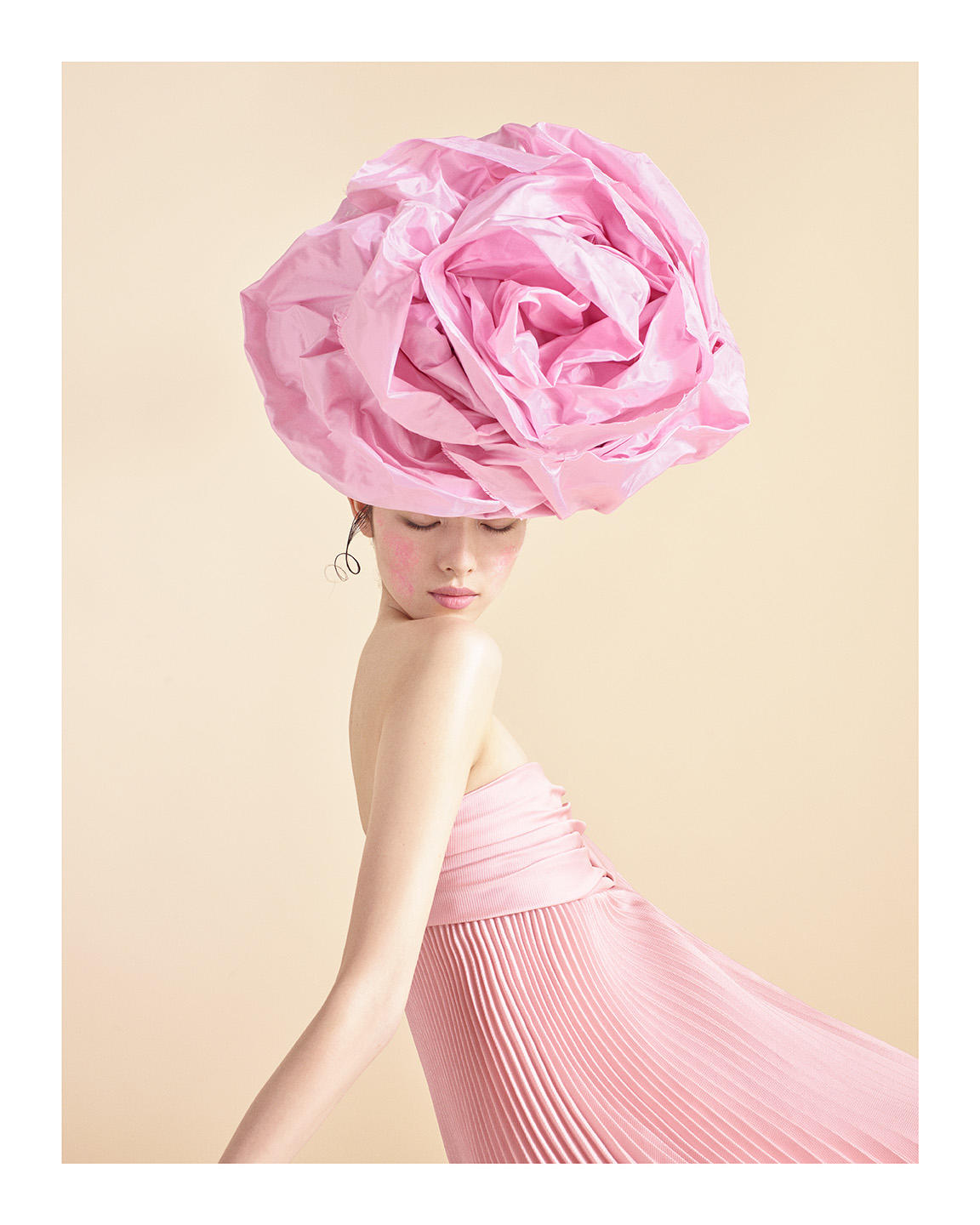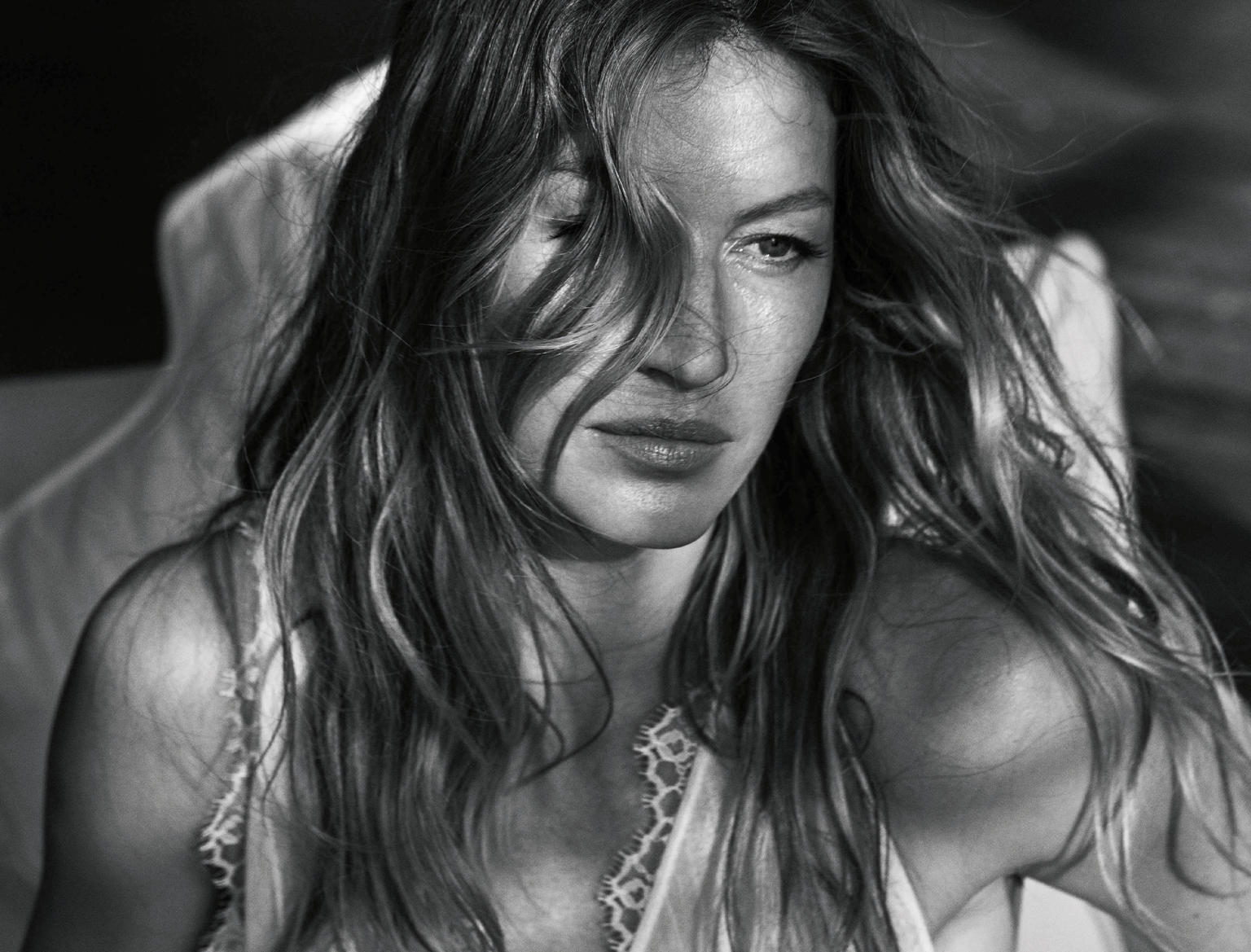
It’s a full-circle moment to speak with Akki Shirakawa over coffee in Chelsea, one late summer day between the relative calm separating fashion seasons. Both former students of hairstylist and photographer Luigi Murenu, we speak to each other years after Shirakawa went out and carved a lane of his own as one of the go-to hairstylists in the fashion business. The Japanese-born, New York transplant has achieved the best balance of modern creativity through his chosen medium, morphing strands to either take center stage or melt seamlessly into a synergistic visual. What’s better? His expertise in evolving wigs beyond novelty into something more affably simple has gained him the top pages of Vogue, Love, and CR Fashion Book. As editors clamor to involve his talents, Shirakawa exclusively speaks with Models.com on how he first caught on to hairstyling, moving into the relative unknown in both location and career, and the beauty of a good wig.
How did you first start on the path towards styling hair, being from Japan? When did you first get interested?
My first time was when I cut my friend’s hair when I was 10 years old. I used to cut my friends’ hair and my sister’s, then I went to high school and I had my own hair salon in the corner of a university. I wanted to be a rockstar! I was in a band so when I was young, I was already really into hair and makeup. For me, it wasn’t just beauty, but also the creative aspect of making clothes – how everything together created a personal identity. Making everything, anything was exciting to me.
So, when you were cutting all your friends’ hair back in the day, did they always come away saying, “Oh my God, what is this? This is great,” or was it always an experiment?
Yes, at first it usually looked like a mistake. Although, in time, I learned how to do bobs, straighten hair, 90s stuff. Soon making any shape came easily to me. Then, I was able to do any color. Then, I started to work at a salon in Tokyo.
Did you go to school for hair?
I didn’t have enough money to go to school, because I bought a car and a motorcycle. I spent all my money! I decided to go to a salon and while working I went to a temporary school, where you can study to get the right hairstylist license.
So then, how did you transition from being in Japan and first coming overseas?
I started to realize that most of the fashion businesses were outside of Japan, and there was a vibrant international creative community that I wanted to be part of. I loved doing everything in Tokyo when I was there, but I just decided to move to New York.

Understanding the art of cutting hair feels like it’s very direct. But the artistry of wig-making is beyond my mind. How did you first learn that craft?
Basically, wigs are from my time with Luigi [Murenu]. He used to use lots of wigs and challenged the convention of how things were done. It was an incredible learning opportunity, and I pushed myself a lot. One day, he just gave me a key, and said, “Here’s my mini storage.” From then on I had free reign to play with all of the materials — he allowed me to really experiment and do anything, which I will never forget. It was a great playground for me to hone my skills — to learn how to create boundary-pushing looks while also refining my technique for more subtle, understated projects too.
How do you take what you’ve seen before and make it completely new? I imagine the practice of reinvention isn’t easy currently. So much has been done, so how do you challenge yourself?
It’s really difficult. I like to bring ideas from the streets and the everyday people that I see there. I pull inspiration from life outside fashion.

Do you have any muses or models that you are always loving to work with?
I have only worked once with Susanne Bartsch. She was amazing and really open. When I did Italian Vogue together with her and Steven Klein, that was the longest day.
Steven likes night shoots, I hear.
Yeah. He started in the early morning in stage C at Pier 59. Not only that, they had another studio at Pier 59 for 100 drag queens he was also shooting. I expected to do only Susanne’s hair and we had a conversation before, of course. Then they had 100 drag queens and Steven said, “You need to do them.” Can you imagine? It was such a great time. Of course, they start to come into our studio saying “Oh, what about that?” And then Susanne said, “She should change her hair. Oh my God, what about this one?” We started doing crazy, complicated makeup…
That just seems like peak creativity. I saw her documentary on Netflix, and she’s a big part of fashion and nightlife history in New York City.
Yeah. Absolutely and she’s still doing events, like every month.
Talk about how, when you first were looking to go out on your own and started collaborating a lot with Carine Roitfeld or Steven Klein. How was that process? I think a lot of times, our readers want to know, “If I’m an assistant, how do I go out on my own?”
I think since I worked with Luigi, Carine knew me, Steven knew me. Other people like Mert & Marcus knew me. Inez & Vinoodh. So, they gave me a chance, a small trust. I was ready to do it on my own. I already had the styling and wig skills, so I managed to shoot a bit even though I couldn’t speak English properly. I just had a lot of wig choices, so they could pick and choose, and the collaborations evolved from there.

It’s interesting how, looking at your page on Models.com, I see a lot of editorial work or advertising work. Did you make the decision that you didn’t want to do so much runway because it’s not creative, or just because of timing, or hectic schedule?
I like fashion shows because I like the kind of energy. Seeing the new thing, new models, you start to get ideas from that, absolutely. But it’s hectic timing. Still, I like it, and I know how to do it. How to manage team, and other things.
There’s been this normalization of wigs. Everyone wears wigs. It’s not a weird thing. It’s not something that’s only for a photo shoot. What would you say is your creative process, when you’re making wigs for editorials? Do you use specific hair, or do you go to certain companies?
I don’t make wigs from scratch. I buy good quality hair from the beauty salons. I do color. I of course cut, and sometimes perm. Like my hair. The purpose of a wig is to make it as natural as possible, so you don’t recognize it’s a wig.

Going back to your work, are you very well-rounded, or do you have a very specific aesthetic that you’re always trying to push?
I appreciate constructing strong images but as I’m Japanese, I’m kind of conservative. My work tends to be quite subtle and very effortless, and wearable, which means you don’t usually see someone with overdone hair in the picture. This is my natural inclination, although I do love edgier editorials and campaigns that have a much more out-there look and feel. It reminds me of my rocker days in Tokyo. I don’t want to be like, “I did this hair.” I want to make my hair create the picture, of course. It doesn’t need to be about me from an ego standpoint.
But it’s interesting. A very humble way of creativity, and the approach to creativity. I always wonder, when you work with Steven and Inez & Vinoodh they’re these big personalities that capture the picture. How is it, that process leading up to a shoot, as far as collaboration? I guess the question is how do you collaborate? Is it just kind of giving your ideas, compromising? Or do you always have like, “This is what I think we should do. Trust me, I’m an expert.”
That’s the best way, all the time. But not many people, unfortunately, do that. I’m a listener, maybe, so I listen to people and try to understand, and then think about what I can do to collaborate or how I can give the project my own subtle twist.
You’ve obviously done so much. From your outside perspective, you might be fine with everything you’ve done but is there anything else that you’re dying to do? Places that you would love to shoot next?
I was in Cuba at the Buena Vista Social Club and they haven’t changed anything. There are so many historical stories behind them and I‘ve just never seen that kind of environment.


